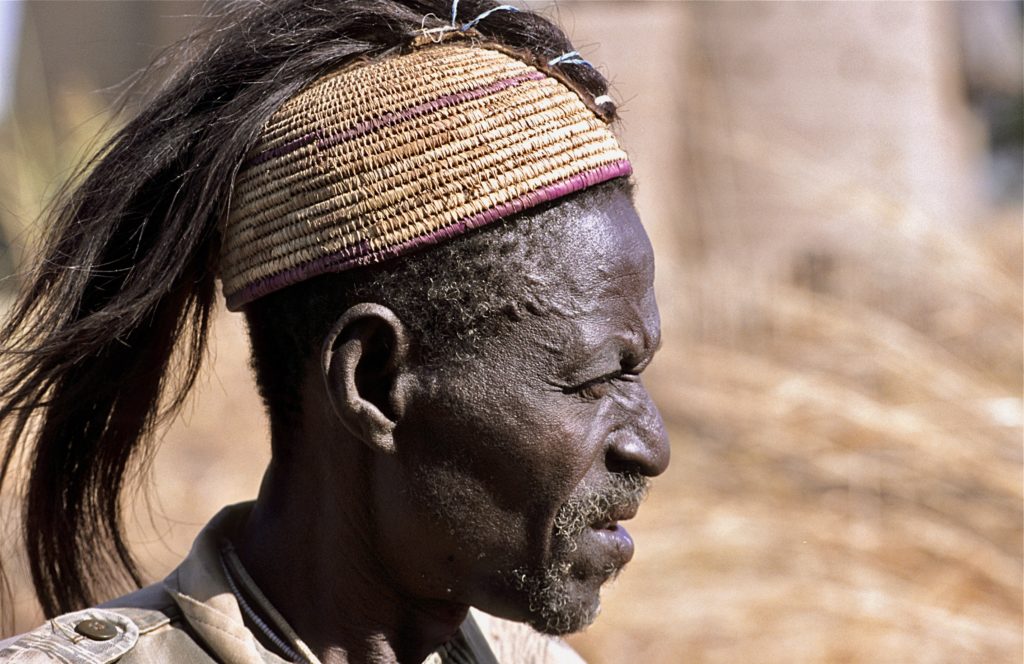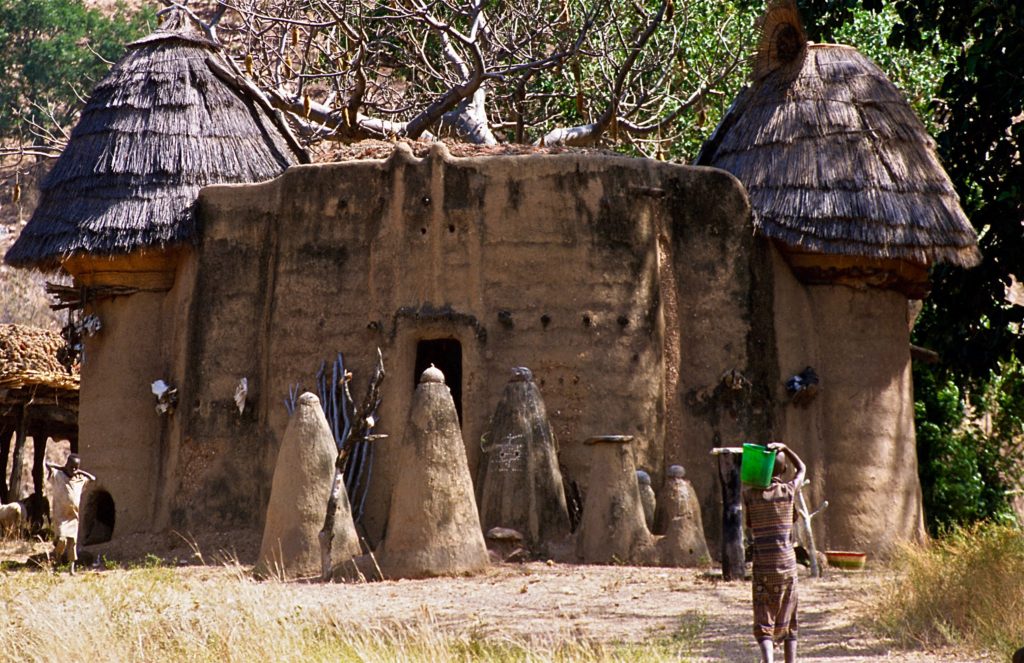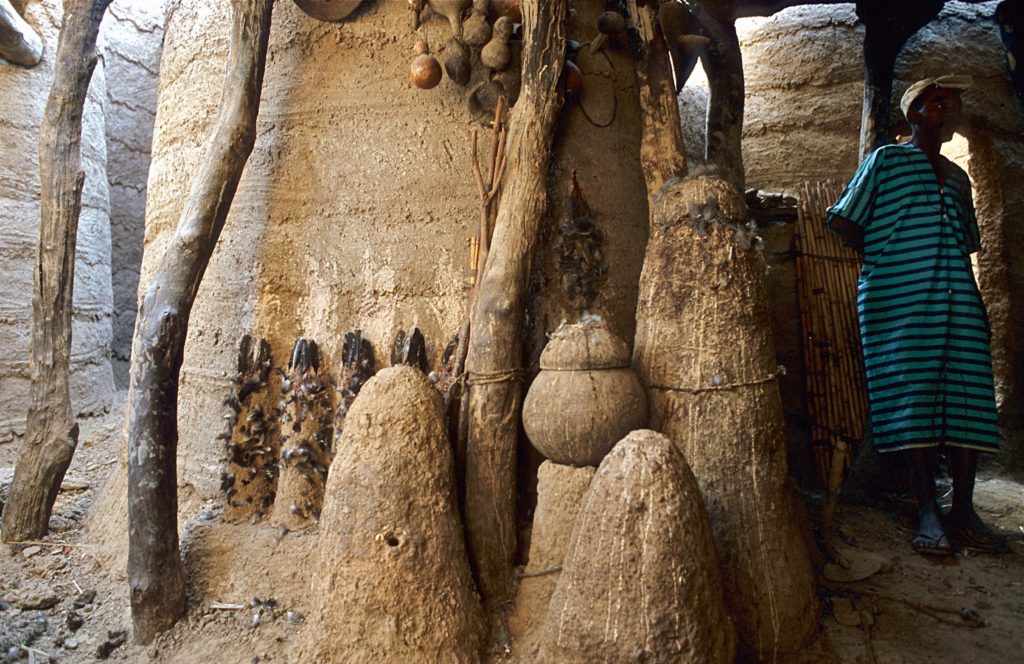The story by our traveller Massimo Bocale
Benin: the houses of Batammariba that inspired Le Corbusier
In the province of Natitingou, in northwestern Benin, the plain ends abruptly at the foot of the Atakora, the mountains that mark the border with Togo.
In this part of Africa, which remined isolated for a long time, live the Batammariba or Tamberma as they are called in Togo, known until a few decades ago as sombà which in the local language means “naked”, a term which is now meaningless given the fact that since the 70s this tribe has abandoned the total nudity following the impositions of the central government. Before then, men wore only the penis case and were armed with bows and arrows, while women wore a kilt of fresh leaves which they replaced periodically. The traditional ornament worn by women (now used only by the elders) is the wedge-shaped stone necklace inserted under the lower lip, while the majority of men continue to wear the traditional cap decorated with monkey hair.

The characteristic ritual headdress in the shape of an inverted wicker basket adorned with cauri shells and surmounted by a pair of antelope horns is worn by young women during the initiation ceremony called Dikuntiri. Recognized as adults, the girls can formally unite with their husbands who had taken them as wives when they were still children and a ceremony confirms this reunion: when the bride enters the house-fortress for the first time, her husband sticks an arrow between her horns headdress, capturing her metaphorically as the hunter does with his prey.
The Batammariba are well-known for their fortress-houses very similar to the small fairy tale castles, nowadays Unesco heritage. These mud and thatch houses known as the “Tata” are one of the finest examples of traditional African architecture, to the extend that Le Corbusier got very impressed by these houses.

The dimensions are quite impressive, if we consider that they are built without a real supporting structure; as a matter of fact, they measure about 12 meters wide by 4 to 5 meters high.
The Tata has been developed about a few centuries ago as a house-refuge to protect the people from hostile tribes and above all from the invasions of western colonizers. These were also strategically built apart from each other to force the invaders to spread into multiple groups, highly weakening them.
The houses built within the cultivated fields are of two floors: the ground floor is used as a warehouse and stable for the animals while the upper floor is reserved for the bedrooms and kitchen. The towers are used to store millet, corn and various legumes.
In front and next to the only entrance you can find phallic monuments that represent the ancestors. On those, small animals such as chickens and savannah hens are periodically sacrificed to ward off famines, diseases and other natural calamities as well as to obtain rain and a good harvest. . The Batammariba are animists. They believe that their destiny is the spirits of the ancestors’ business who act as intermediaries between the human being and the various divinities.

Phallic-shaped fetishes are erected to honour the family members. When a child is born, the head of the family erects a tiny pile of mud next to the other fetishes that will be swollen with each rite of passage: therefore the older the individual, the larger his simulacrum will be. Some are decorated with cauri shells which, due to their particular anatomical shape, represent fertility. When a person dies, an overturned earthenware bowl or, more rarely, a stone will be placed on top of his fetish.




